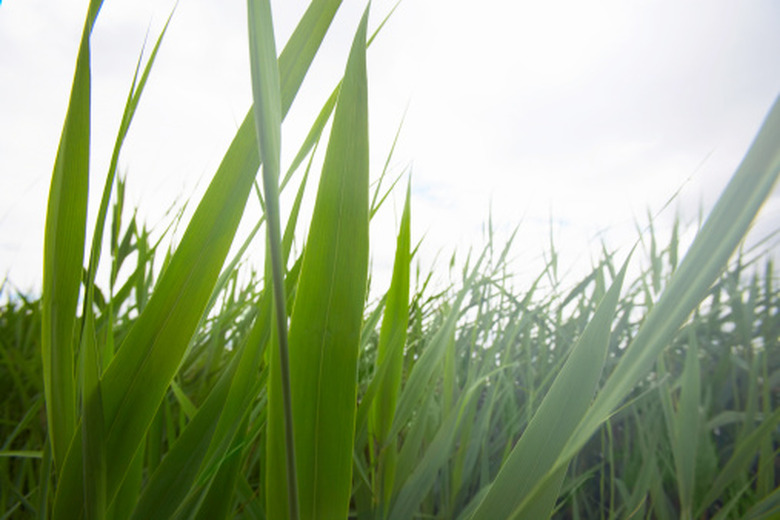Do I Have To Spread Straw Over Newly Planted Grass Seed?
Seeding a new lawn is often the least costly method of installing a groundcover over bare soil. Growing new grass is a process that requires constant care, especially during the first couple of weeks.
Seeding a new lawn is often the least costly method of installing a groundcover over bare soil. Growing new grass is a process that requires constant care, especially during the first couple of weeks. Many gardeners spread a layer of straw over the top of the new grass seed to help reduce the need for frequent watering sessions.
Purpose
The main reason for spreading a layer of straw over newly-seeded lawns is to limit the amount of surface evaporation. Growing new grass involves planting the seeds just below the surface of the soil. This shallow level of planting subjects the seeds to dryness and dehydration. Without even levels of moisture, grass seeds may fail to germinate and young grass seedlings may wither and die. Straw does not add nutrients to the soil or improve the health of the underlying soil.
- Seeding a new lawn is often the least costly method of installing a groundcover over bare soil.
- Growing new grass involves planting the seeds just below the surface of the soil.
Necessity
Straw acts as a mulch that helps hold in soil moisture. This vegetative substance is often the least expensive way to cover new seeds, especially in large areas of lawn. While the straw helps guard against evaporation, it is not necessary to the growth and establishment of a new lawn and may even harm the health of your new grass. Damp and moldy straw may introduce disease organisms and increase the risk of fungal conditions in your lawn. Clean, dry straw is usually safe to use as a mulching material on new grass seeds.
Alternatives
Frequent watering eliminates the need for a mulch layer over newly-seeded lawns. However, depending on your climate, you may need to water lightly every few hours to keep the surface of the soil slightly damp while the grass seeds germinate. A fine layer of peat moss is a suitable alternative to using straw. Fabric mulches allow the grass to grow while retaining the soil moisture. Some varieties of commercially-packaged grass seeds contain particles of mulch mixed in with the seed. These alternatives can eliminate the need for straw that can detract from the appearance of your landscape.
- Straw acts as a mulch that helps hold in soil moisture.
- Clean, dry straw is usually safe to use as a mulching material on new grass seeds.
Precautions
New lawns in humid climates and shaded locations tend to stay slightly damp. Using straw and other mulching materials in damp climates may increase the risk of mold and mildew in the soil and emerging grass sprouts.
References
- University of Arizona: Lawns
- "Your Perfect Lawn"; Pauline Hodgkinson; 2005
